|
|
 |
|
|
Bruce Oberst, Best Historical Army US Nationals 2009
|
Bruce Oberst's
2nd Armored Division Tank Company
Tank Company from:
Cobra, The Normandy Breakout
|
| Company HQ |
|
2x Command M4A1 Sherman tanks
Add Bulldozer to 2iC tank and Hedgerow Cutter to CnC tank |
180 points
10 points |
Combat Platoons
|
|
Tank Platoon
4x M4A1 (76mm) Tanks
Add Hedgerow Cutters |
460 points
5 points
|
|
Tank Platoon
3x M4A1 Sherman Tanks
Add Hedgerow Cutters
|
270 points
5 points
|
Support Platoons
|
|
Armored Rifle Platoon
Command Rifle team, 5x Rifle team, 5x Bazooka, 60mm Mortar, 2x LMG team, 5x M3A1 Halftracks
|
310 points
|
Armored Field Artillery Battery
3x M7 Priest HMC, M4 Sherman OP, M2 half-track, Command Carbine team, Staff team, Jeep |
240 points
|
Anti-aircraft Artillery (Self-propelled) Platoon
Command M15 CGMC, M16 MGMC |
80 points
|
AOP
L4 Grasshopper AOP |
40 points
|
Air Support
Limited P-47 Thunderbolt |
150 points
|
Total:
|
1750 points
|
|
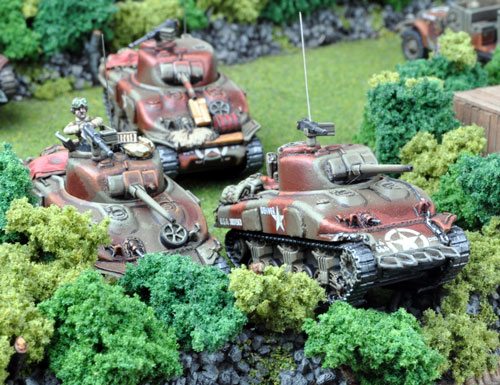 |
Iron Knights
66th Armored Regiment
2nd Armored Division
On July 26th 1944 the 2nd Battalion, 66th Armored Regiment spearheaded the advance of Task Force Rose of the 2nd Armored Division as it passed through the previously engaged 30th Infantry Division and entered combat for the first time during operation COBRA. Ahead of the 66th was a long, hard fought, road that would finally bring it recognition of valor and the honor, as part of the 2nd AD, to be the first US unit to enter and occupy Berlin at war’s end.
|
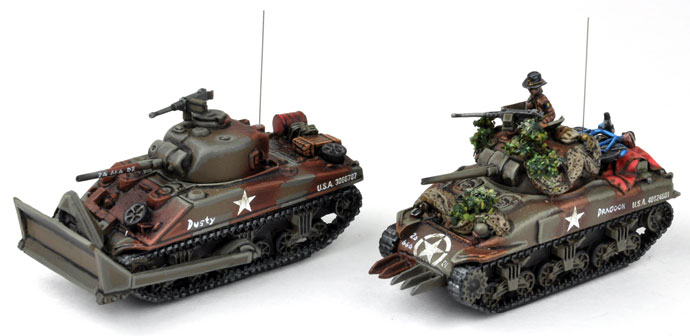 |
| The 66th Armored Regiment was the United State Army’s first armored unit ever formed and can trace its roots back the very beginning of the Tank Service in February 1918. It was formed from the 66th Infantry Regiment and its members were drawn from volunteers from the three primary branches of service at that time, Infantry, Artillery and Cavalry. As part of the American Expeditionary Force under General Pershing the Regiment fought in battles at St. Mihiel, Argonne Forest and the Somme. |
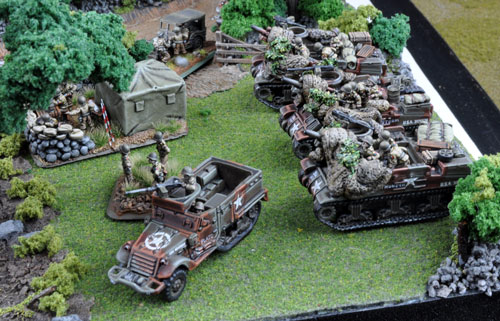 |
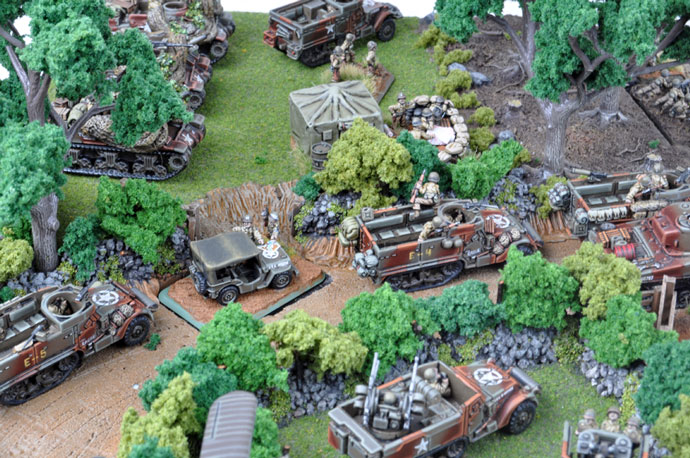 |
The 66th was reorganized and re-designated several times between the wars but on 17 November 1932 it returned to its original name as 66th Infantry (Light Tanks).
The 66th was the only tank regiment in the US Army in 1940 and its experienced officers and men were used to constitute the three regiments for the newly formed 2nd Armored Division. This new formation was placed under the command of Brigadier George S. Patton.
|
 |
|
On 15 July 1940 the 66th Infantry (Light Tanks)
was re-designated the 66th Armored Regiment, the name it would bear
with such pride and distinction throughout WW2.
As part of the 2nd AD the 66th would participate in the landing in French Morocco as part of Operation TORCH in December 1942. The regiment landed at Safi, Operation Blackstone, and was part of the division’s liberation of Casablanca. The 66th later, 9 July 1943, landed at Licata Sicily as part of Operation HUSKY, taking part in Patton’s masterful stroke at Palermo. After Sicily the regiment along with the rest of the division was redeployed to England to prepare for their participation in the greatest amphibious operation in history!
|
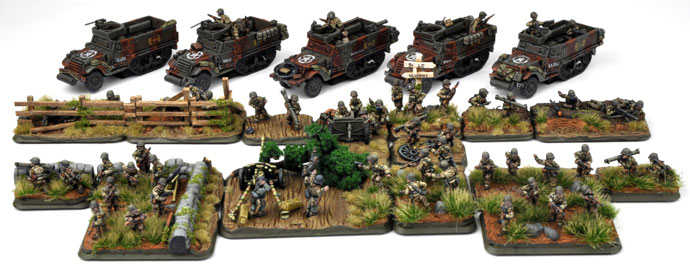 |
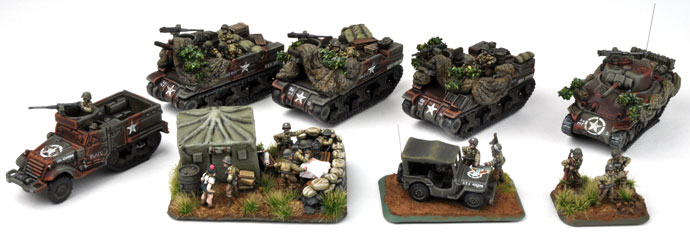 |
|
D-Day, Operation OVERLORD stormed against Hitler’s vaunted Fortress Europe on 6 June 1944. The 2nd AD landed on D+3, 9 June, at Omaha Beach and moved inland to support combat operations against the gathering German defenders.
On 13 June at the battle of Bloody Gulch near Carentan France the 66th Armored Regiment, like the cavalry in some western movie, arrived to relive the beleaguered and outgunned, yet steadfast, Easy Company of the 506th PIR which was facing a determined assault from units of the 17th SS Panzergrenadier Division and the 6th Fallschirmjager Regiment. The attack had during the day forced the paratroopers back to within 500 meters of the vital road junctions of Carentan before the arrival of the 66th and the rest of Task Force Rose. The battle of Carentan would also be the 66th Armored Regiment’s first encounter with their most bitter enemy over the next month, Bocage.
The road to COBRA was a never ending cycle of ambush and overcome in this dense terrain seemingly designed specifically to aid the German defenders.
|
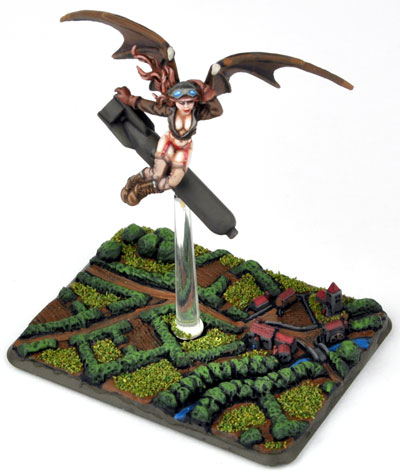 |
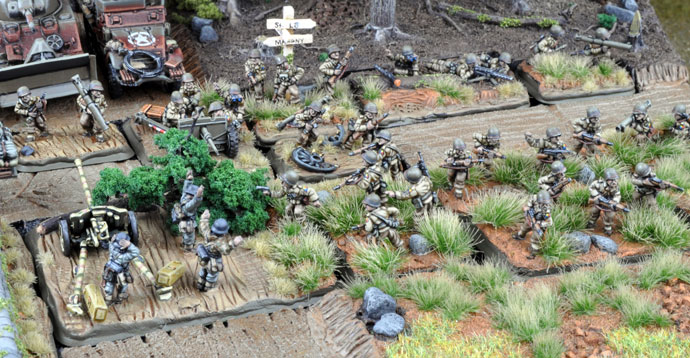 |
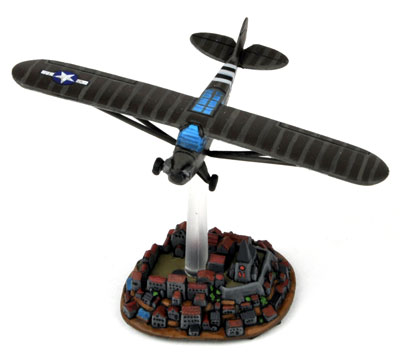 |
The inability to maneuver and flank small
defending forces held the 66th, as well as the rest of the US forces,
to an agonizing and costly crawl.
Operation COBRA was the allied plan to break out of the Bocage heavy areas surrounding Normandy and finally be able to maneuver freely using their superior numbers and surplus of supply to best advantage. The 66th Armored Regiment once again part of Task Force Rose was assigned the task of piercing the German lines once the planned carpet bombing and 30th Infantry Division had cleared the way for breakthrough. The rapid advance and joint operation with the 3rd AD cut off many German units in the area near Roncey France. The 66th also took part in the later German disaster that has become known as the Falaise Pocket.
|
|
The regiment crossed the German boarder north of Schimmert on the 18th of September.
The 66th participated in the battle to take Aachen, part of the Siegfried Line between the dates of 2 and 21 October 1944.
The 66th Armored Regiment was holding positions on Roer River when it
along with the 2nd AD was directed to engage elements of the German
winter offensive in the Ardennes. The 66th fought against units of the
German Fifth Panzer Army. During The Battle of the Bulge the regiment
participated in the destruction of the 2nd Panzer Division and
liberated Hoffalize Belgium.
After a rest and refit time in February 1945 the 66th
crossed the Rhine River on 27 March and with the division was the first
US unit to reach Elbe at Schonebeck on 11 April. Its further advances
were halted at Elbe by orders on 20 April, ending the active combat
roll of the unit in WW2.
The 66th Armored Regiment still serves proudly in the US Army having participated in both Desert Shield and Desert Storm.
|
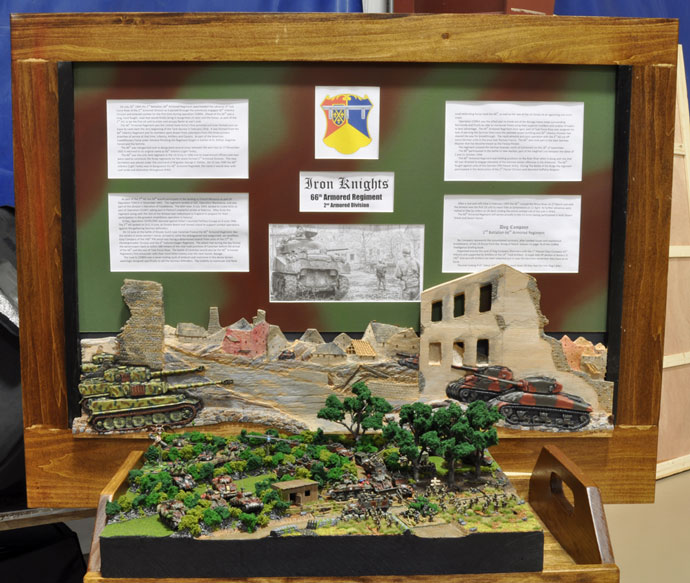 |
|
Dog Company
2nd Battalion
66th Armored Regiment
My Company represents the consolidated survivors, after combat losses and mechanical breakdowns, of the US forces from the ‘String of Pearls’ mission on page 74 of the COBRA intelligence briefing book.
Organized around the core of Dog Company Shermans with the 1st Platoon Easy Company 41st Infantry and supported by Artillery of the 14th Field Artillery. A single AAA-SP section of Battery D, 195th Anti-aircraft Artillery has been attached just in case the Germans remember they have an air force.
The ever lurking P-47 ‘Jabos’ will keep Fritz’s head down till they feel this Iron Dog’s bite!
Bruce Wayne Oberst
|
|
|
|